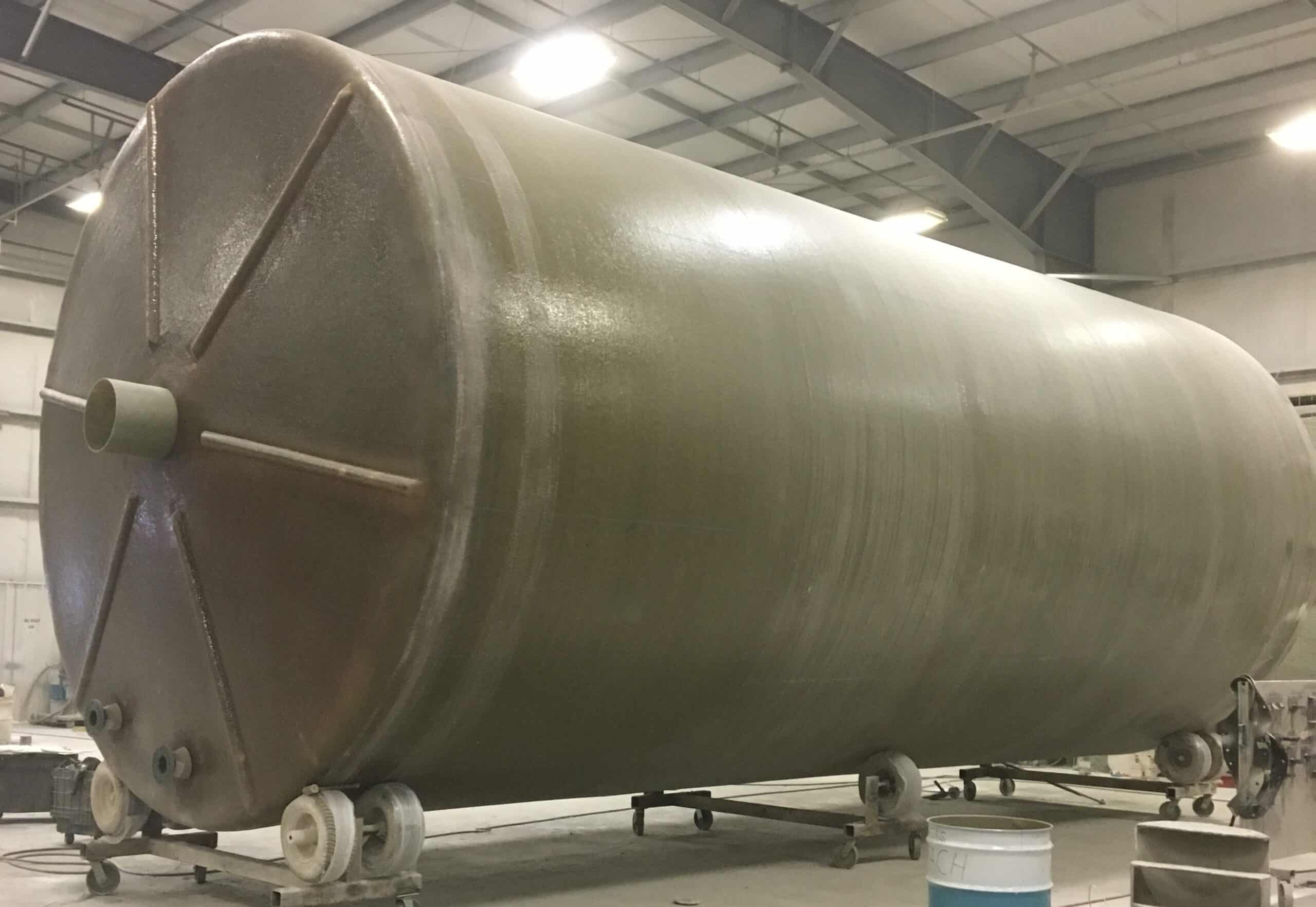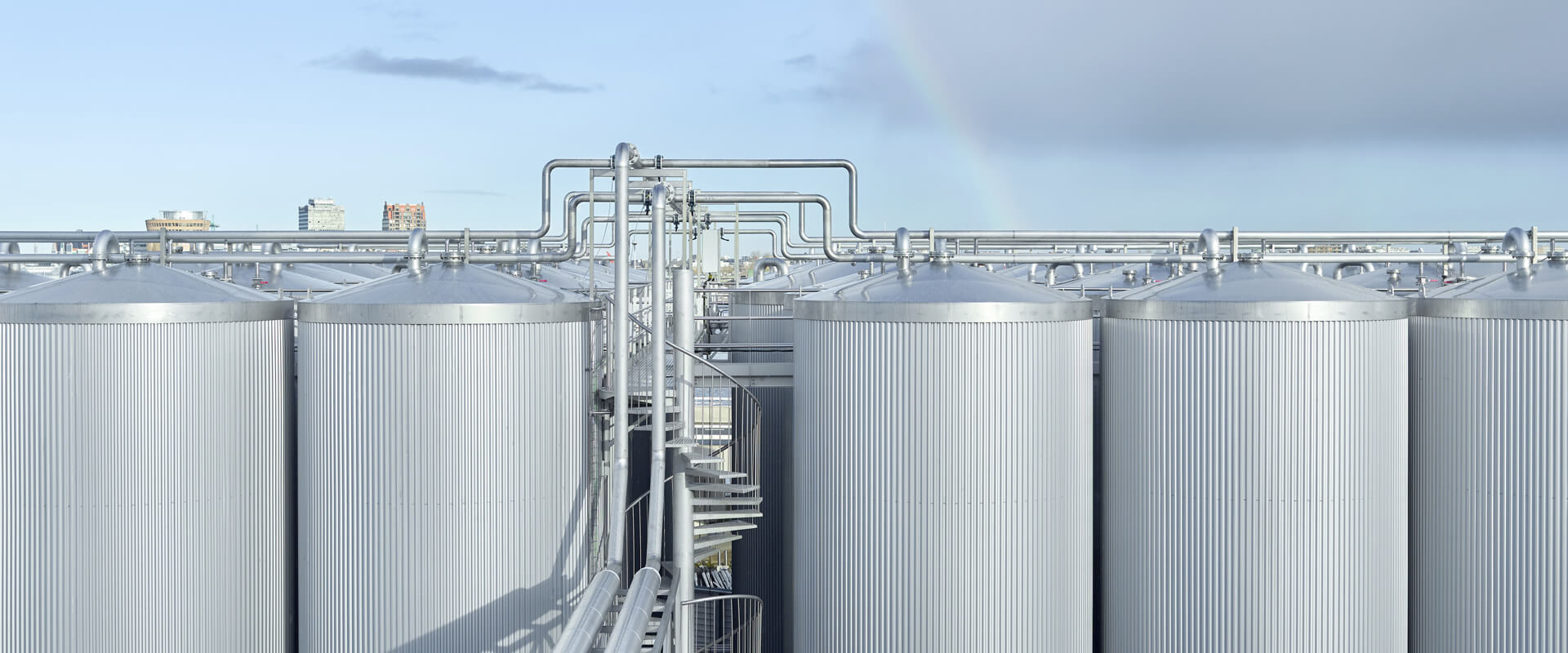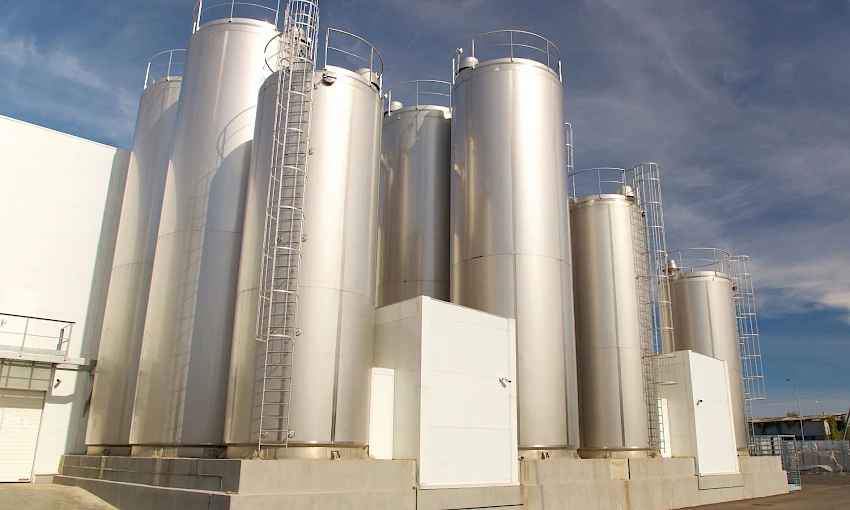The Future of Storage Tank Manufacturing: Patterns and Technologies to View
The storage tank manufacturing industry is on the cusp of a pivotal development, driven by arising trends in smart products, automation, and sustainability. As sectors progressively focus on ecological obligation, innovations such as green compounds and IoT-driven tracking systems are improving functional paradigms. Furthermore, the expanding demand for personalization and modular layouts suggests a change towards even more versatile production techniques. Recognizing these trends not just highlights the difficulties ahead but additionally exposes chances that might redefine the landscape of storage tank manufacturing in the coming years. What ramifications might these innovations hold for industry stakeholders?
Developments in Smart Products
In the last few years, the storage tank manufacturing sector has experienced a significant uptick in the fostering of clever products, reinventing design and performance. Smart products, which can respond dynamically to ecological adjustments, have enabled manufacturers to develop containers that are not only much more resilient however additionally a lot more efficient in their functional capabilities.
One significant advancement is the assimilation of shape memory alloys and polymers that can adapt to differing stress and temperature levels. This flexibility improves the structural honesty of tanks, reducing the risk of leakages and failings (Texas Oil & Gas Storage Tank Fabrication Authority). Furthermore, these materials typically show self-healing homes, which even more lengthens the life-span of storage containers, minimizing upkeep costs and improving safety and security
The incorporation of sensors within clever materials allows for real-time surveillance of tank problems, providing important information that aids in predictive maintenance and threat administration. This data-driven method not only enhances functional efficiency but likewise straightens with ecological sustainability objectives by optimizing source use and protecting against spills.
Rise of Automation Technologies
The increase of automation technologies is transforming storage tank production by integrating robotics right into manufacturing procedures, boosting efficiency and precision. Furthermore, the release of clever sensors enables real-time tracking, making certain quality control and safety requirements are satisfied. AI-driven procedure optimization better improves operations, minimizing expenses and enhancing total performance in the sector.
Robotics Assimilation in Manufacturing
Robotics assimilation is revolutionizing the manufacturing landscape, particularly in the storage tank market. As manufacturers undertaking for increased efficiency and accuracy, robotics modern technologies are coming to be essential tools for streamlining manufacturing procedures. Automated systems can executing recurring jobs with higher speed and accuracy than human labor, lowering the chance of mistakes and boosting total item top quality.
Among the vital benefits of robotic combination is the capability to enhance operations. Automated robot arms can deal with heavy products, weld elements, and conduct inspections, which minimizes physical pressure on workers and reduces downtime. This change not only boosts security but additionally enables human employees to concentrate on more facility and value-added tasks.
Moreover, robotics can assist in flexible production, enabling firms to adapt promptly to altering market needs - Oil & Gas Storage Tank Fabrication. Advanced shows enables robotics to easily change between different jobs and products, which is especially advantageous in a sector where personalization is increasingly preferred
As robotics modern technology remains to advance, manufacturers can expect improved capabilities, including enhanced equipment finding out algorithms and increased fact applications, further driving effectiveness in storage tank manufacturing and establishing new standards for the market.
Smart Sensors Release

The data collected from these sensing units can be leveraged to enhance the supply chain, making certain that materials are offered when required while minimizing waste. This level of understanding allows manufacturers to respond quickly to transforming conditions and client needs, boosting overall efficiency.
In addition, smart sensors add to boosted regulative conformity by continuously checking ecological factors and making sure adherence to safety and security criteria. As the industry progresses towards more sustainable practices, the capability to check exhausts and source consumption in real-time is vital.
AI-Driven Process Optimization
Manufacturers in the storage tank sector are increasingly utilizing the power of AI-driven process optimization to improve functional performance and decision-making abilities. By incorporating advanced algorithms and machine learning techniques, companies can analyze vast amounts of information created throughout the production process. This data-driven method allows real-time tracking of production metrics, resulting in more informed choices and prompt treatments.
AI technologies facilitate anticipating upkeep, enabling manufacturers to expect devices failures before they occur, thereby reducing downtime and upkeep expenses. Additionally, these systems can maximize resource allocation by analyzing manufacturing patterns and changing process, making sure that materials and labor are utilized effectively.
Additionally, AI-driven optimization boosts high quality control by recognizing possible defects during the manufacturing procedure. Automated examinations powered by AI can swiftly discover inconsistencies, making certain that only items meeting rigid quality criteria progress with the manufacturing line.
As the storage tank market remains to embrace automation, AI-driven procedure optimization sticks out as a transformative pressure, driving technology and competitiveness. By leveraging these technologies, manufacturers can not just improve operations however likewise adapt promptly to market needs, positioning themselves for sustainable growth in a progressively intricate manufacturing landscape.
Concentrate On Sustainability Practices
As the storage tank manufacturing sector evolves, a significant emphasis is put on sustainability techniques. This includes the adoption of eco-friendly materials, the application of energy-efficient production procedures, and the integration of circular economic climate concepts. By focusing on these campaigns, manufacturers not just reduce their environmental effect however additionally boost the longevity and effectiveness of their items.
Green Materials Adoption
Progressively, the storage tank manufacturing industry is embracing environmentally friendly materials as an essential element of sustainability methods. This change is driven by increased ecological recognition and governing stress, triggering manufacturers to look for options that lessen environmental effect.
Naturally degradable compounds and recycled metals are gaining grip, supplying both efficiency and lower carbon footprints. For circumstances, utilizing high-recycled-content steel not just lowers the need for virgin products however also enhances the total sustainability of the item lifecycle. Furthermore, manufacturers are exploring bio-based resins that provide toughness while being much less dangerous to the atmosphere.
Additionally, the fostering of environmentally friendly coverings and finishes, which are devoid of volatile natural compounds (VOCs), reflects the market's commitment to minimizing air pollution and advertising healthier working problems. These advancements not only line up with global sustainability objectives yet additionally meet the expanding market need for greener products.
The combination of eco-friendly products in storage tank production is not merely a pattern; it stands for a proactive technique in the direction of accountable production that prioritizes both ecological stewardship and economic feasibility, establishing a brand-new requirement for future growths in the sector.
Energy-efficient Manufacturing Processes
There is an expanding recognition within the storage tank manufacturing sector of the value of energy-efficient processes as a crucial part of lasting methods. As the market deals with boosting stress to reduce its carbon footprint, manufacturers are implementing innovative technologies and methods aimed at reducing power consumption throughout the manufacturing cycle.
One considerable trend is the adoption of advanced manufacturing methods such as lean production and automation. These strategies simplify procedures, reduce waste, and enhance productivity, while also lowering energy usage. Additionally, the integration of renewable energy sources, such as solar and wind power, right into manufacturing centers is coming to be much more common, enabling companies to operate sustainably and reduce dependence on fossil gas.
Energy-efficient machinery and equipment are being prioritized in brand-new financial investments, as manufacturers look for to optimize their energy intake. Making use of energy management systems enables real-time surveillance and evaluation, promoting continual enhancement in energy efficiency.
Round Economic Situation Combination
A noteworthy shift in the direction of circular economy combination is changing sustainability methods within the storage tank manufacturing market. This technique highlights the relevance of resource effectiveness, waste reduction, and the recycling of products throughout the manufacturing lifecycle. By adopting round concepts, manufacturers are progressively concentrated on creating tanks that focus on longevity, repairability, and recyclability.
As component of this adjustment, firms are exploring cutting-edge materials and manufacturing methods that decrease environmental influence. The incorporation of recycled steels and plastics not just reduces the need for virgin sources but additionally decreases carbon exhausts related to removal and handling. Additionally, manufacturers are carrying out take-back systems that facilitate the refurbishment and recycling of end-of-life storage tanks, thus shutting the loop in the manufacturing cycle.
Partnership among stakeholders, including customers and providers, is important for promoting a circular economic situation (Oil & Gas Storage Tank Fabrication). This collaboration enables the sharing of ideal techniques and urges the advancement of lasting supply chains. Ultimately, incorporating round economic climate principles right into storage tank manufacturing not just improves environmental stewardship but also placements firms to fulfill advancing regulatory standards and customer expectations for sustainability
Boosted Security Procedures
In today's manufacturing landscape, enhanced safety and security methods have ended up being important for storage tank manufacturers. The industry deals with raising regulatory examination and demands for higher safety and security requirements as a result of the potential threats associated with the storage of hazardous products. Consequently, manufacturers are embracing a complex technique to improve safety measures throughout the production process.
One significant advancement is the application of innovative risk analysis tools that determine prospective dangers during the design and production phases. These tools facilitate aggressive procedures to alleviate risks prior to they intensify into crucial concerns. Furthermore, manufacturers are buying staff member training programs that highlight safety techniques, ensuring that all personnel are skilled in emergency treatments and equipment handling.
Furthermore, there is an expanding emphasis on the usage of premium products and ingenious styles that improve architectural stability and lower the possibility of failures or leakages. Regular maintenance checks and strenuous testing procedures are additionally being integrated into the manufacturing lifecycle to ensure conformity with safety and security regulations.
Assimilation of IoT Solutions

IoT tools help with anticipating maintenance, which decreases downtime and prolongs the lifespan of storage tanks. By assessing information collected from sensing units, manufacturers can visualize possible check my source failures and execute maintenance tasks prior to critical problems arise. This positive strategy not only conserves costs however also ensures conformity with safety guidelines.
Additionally, IoT combination sustains better stock monitoring by providing precise, real-time information on stored materials. Texas Oil & Gas Storage Tank Fabrication Authority. This ability assists manufacturers maximize their supply chains, ensuring that required resources are available when needed, thus enhancing overall productivity
The application of IoT services enables enhanced interaction in between containers and centralized monitoring systems, enhancing procedures. As the storage tank production market continues to adopt IoT modern technologies, we can anticipate considerable developments in safety methods and functional effectiveness, ultimately bring about even more resilient production methods.
Personalization and Modular Design
Adaptability in design has actually ended up being a cornerstone of modern-day storage tank manufacturing as customization and modular style options gain grip. The developing needs of markets such as oil and gas, chemicals, and water management demand customized options that accommodate details operational needs. Customization makes it possible for manufacturers to produce containers that meet one-of-a-kind specifications regarding size, form, material, and capability, guaranteeing peak efficiency and efficiency.
Modular style, on the various other hand, allows for the setting up of pre-fabricated parts, resulting in considerable time and price savings. This technique promotes rapid implementation and scalability, making it possible for businesses to adapt their storage space capabilities in reaction to changing need. Additionally, modular systems can be easily broadened or reconfigured, lessening downtime and boosting functional flexibility.
The integration of sophisticated manufacturing innovations, such as 3D printing and computer-aided layout (CAD), more boosts customization possibilities. These advancements make it possible for specific design and quick prototyping, permitting for fast changes and iterations during the layout procedure.

Governing Modifications and Conformity
Regulative changes and conformity requirements frequently form the landscape of storage tank manufacturing, engaging manufacturers to remain cautious and adaptable. With raising environmental worries and the push for lasting practices, regulative bodies are implementing stricter standards concerning discharges, products, and safety and security standards. For instance, the U.S. Epa (EPA) and numerous state firms are changing policies that control the design and installment of tank, especially those made use of for dangerous substances.
Manufacturers have to not only adhere to existing guidelines yet additionally anticipate future changes, requiring continuous financial investment in study and development. This includes adopting innovative materials and modern technologies that boost container honesty and environmental management. Furthermore, compliance with regulations such as the Spill Prevention, Control, and Countermeasure (SPCC) guideline is essential for manufacturers to avoid significant fines and legal liabilities.
Additionally, the integration of electronic technologies facilitates conformity surveillance and reporting, enabling manufacturers to maintain openness and effectiveness. As regulations remain to advance, remaining informed and proactive is crucial for storage tank manufacturers to guarantee conformity, guard public health, and protect the setting, eventually shaping a more sustainable sector.
Frequently Asked Inquiries

What Are one of the most Usual Materials Used in Storage Tank Manufacturing?
The most common materials used in storage tank manufacturing consist of carbon steel, stainless-steel, and fiberglass. Each material provides unique advantages, such as resilience, deterioration resistance, and versatility to numerous storage demands and environmental problems.
How Do Storage Space Tanks Effect Citizen Ecosystems During Installment?
Tank installment can disrupt regional communities by changing land usage, affecting water drainage patterns, and possibly presenting pollutants. Appropriate website assessments and environmental administration techniques are important to minimize these impacts and safeguard biodiversity.
What Is the Ordinary Life-span of a Modern Storage Tank?
The average life expectancy of a modern storage tank commonly ranges from 20 to 30 years. Aspects such as worldly top quality, environmental conditions, and maintenance methods greatly influence longevity and general performance throughout their operational life expectancy.
Just How Do Manufacturers Make Certain Quality Control in Production?
Manufacturers guarantee quality assurance with extensive screening methods, adherence to sector criteria, and continual surveillance during production (Oil & Gas Storage Tank Fabrication). Advanced innovations such as automation and real-time data analysis even more improve consistency and dependability in storage tank manufacturing processes
What Are the Expenses Connected With Keeping Tank?
Keeping storage containers involves different costs, consisting of routine inspections, repairs, regulatory compliance, corrosion avoidance, and possible ecological remediation. These expenses can greatly influence total operational budgets and necessitate aggressive administration to ensure long-term performance and security.
As manufacturers progressively embrace automation modern technologies, the implementation of wise sensing units is ending up being a critical aspect of modern-day manufacturing processes in the storage space tank industry. Manufacturers in the storage space tank sector are progressively utilizing the power of AI-driven procedure optimization to boost functional effectiveness and decision-making capabilities. Significantly, the storage container manufacturing sector is accepting eco-friendly materials as an essential facet of sustainability methods. In today's production landscape, enhanced security protocols have become crucial for storage space container manufacturers. Regulatory changes and compliance demands often shape the landscape of storage space container manufacturing, engaging manufacturers to remain cautious and adaptable.